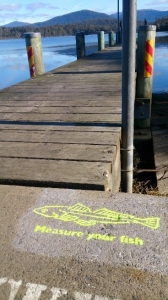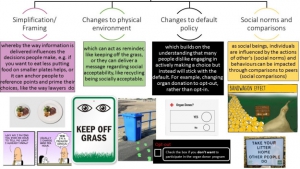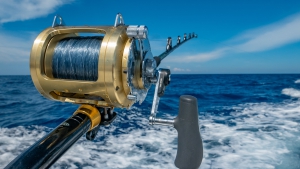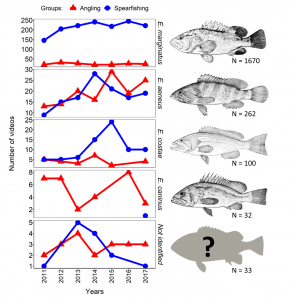By: Casey Dresbach, SRC Intern
At a primal level, individuals do not generally enjoy being told what to do or how to act. A toddler would much rather prefer to act freely as opposed to being restricted to regimented rules. In a study done by Yulia Starostina, the emotional well-being of preschoolers was examined under strict parenting measures; “forcing” children to learn certain subjects that he/she did not independently express interest in (Starostina, 2013). The results showed an “emotional ill-being” and a strong correlation of mothers’ forcing the development of their children and their educational pathways with their children’s anxiety. The induced anxiety within the population of children studied is surveyed as an indicator to preference of enforcement.
Fishing has served as both a recreational and commercial enterprise for hundreds of years. It provides socio-economic welfare, health benefits, and contributes considerable amounts of protein to communities worldwide. The global estimation of recreational fishing participation is an estimated number of fishers ranging from 220 million to 700 million (Mackay, S., Putten, Sibly, & Yamazaki, 2018). However studies have shown enforcing compliance within recreational fishing is not an easy feat. Fishers naturally work within their own self-interests and such measures are not always taken in favor of the environment. Current strategies to get recreational fishers to act sustainably favor rules and regulations. Yet low levels of adherence to such restrictions set by authorities can directly impact the environment, the resources, and the several species of marine organisms that are extracted daily.
In a piece of literature written by British ecologist Garrett Hardin brought to light, “The Tragedy of the Commons.” (Hardin, 1968). The ocean and its resources combined are characterized as the commons. Such natural resources are described as the commons because generally speaking anyone can extract certain species and failure to comply is often common as well.
In a recent study (Mackay, S., Putten, Sibly, & Yamazaki, 2018), the compliance approach is discussed and scrutinized as the traditional means to fisheries management. Fisheries management in Australia was used as a study area to analyze behavioral insights as a means to target non-compliance of fishers. Traditional enforcement tells recreational fishers what they can and cannot do versus given choices as to what they could possibly do. This study examined the compliance approach within the realm of fisheries management and how as a stand alone mechanism might be vulnerable to nonfulfillment. Difficulty to ensure obedience with this mechanism is characterized by the high number of participants and costs of enforcement, the absence of continual monitoring of fishing activity, and the complications in accurately determining catch levels (Mackay, S., Putten, Sibly, & Yamazaki, 2018). The effectiveness of this traditional method is limited, yet current management is heavily reliant on this compliance approach.
As an additional and perhaps a complementary method, the nudge theory is introduced. “If deterrence relies on ‘shoving’ people to make certain decisions (such as complying with rules), a ‘nudge’ can be thought of as a more subtle way to encourage a decision that is in people’s best interest.” (Mackay, S., Putten, Sibly, & Yamazaki, 2018). Such examples may include but are not limited to how options are presented to people, the tone and language in which it is presented Framing, changes to physical environments, changes to default policy, and the use of social policy and social norms are all entities of potential nudges in recreational fisheries.
Framing is a common tactic used in several arenas. One common example would be in healthcare. “90% of people survive post surgery,” versus “10% die post surgery.” To the patient, the latter does not sound as approachable or appealing as the first. At a cattle and camping station in Western Australia that catch limit is stated to be “no more than 2 fish per day to ensure the sustainability of the wonderful resource. We have a possession limit of 5kg. Catch a fish each day, no need to freeze, there is no comparison to the taste.” (Mackay, S., Putten, Sibly, & Yamazaki, 2018). The message is framed using descriptive versus punitive wording (i.e. the use of the adjective, “wonderful”). 2 fish per day is also lower than the 5kg limit, hence encouraging participants to utilize the lower bag limit as a reference point. (See Figure 1).

Figure 1. Ruler to measure fish size using interactive language markers to encourage fishers to comply with size limits. (Mackay, S., Putten, Sibly, & Yamazaki, 2018)
The article discusses the idea that individuals will do the “right thing” if they feel they are being watched. Changes to the physical environment such as displaying some similar watching-eye initiatives such as a message along with a picture of eyes encouraging fishers to report any instances of non-compliance. Both framing and changes to the environment are discernable and patent to users, making the message hard to avoid.

Figure 2. Using both framing and changes to the physical environment as measures to encourage compliance among fishers. (Mackay, S., Putten, Sibly, & Yamazaki, 2018)
Large-scale initiatives have been put in place through green energy policies, specifically with Tasmanian fishing licensing giving the user the choice to opt in for digital licenses. By digitizing the licensing market, the renewal process would be automatic and potentially reduce the number of cases where fishers do not have a license to fish. By reducing printing costs too, money can be allocated elsewhere making more resources available for other purposes. There are also gray areas or gaps in the system where language or framing can be incorporated. I.e. “if you renew this way, then you sign an agreement to comply with no go areas,” while still offering the possibility to opt out. This would not serve as a forced mechanism, rather an encouraged, giving the user a choice in the matter while making one more environmentally attractive than the other.
Individuals also tend to do or act in ways others do via mimicry. According to the study, social norms and normative messaging with respect to compliance behavior seem to have a positive correlation. The presence of social norms in social media has not only elicited recognition of non-compliance but also an emotional upset among the fishing community. When one instance of non-compliance was shared on Facebook, an argument was circulated through commenting and sharing the post. This feedback can be used by fisheries departments to show the depict a social norm, disapproval of noncompliance.

Figure 3. Summary of potential nudges to be used in fisheries management: simplification/framing, changes to physical environment, Changes to default policy, and social norms and comparison. (Mackay, S., Putten, Sibly, & Yamazaki, 2018)
Interweaving nudges into fisheries management may be a potential to add dimensionality to the punitive enforcement mechanisms that are already in place. Framing, changes to the physical environment, presenting default options, and changes to social norms are nudges that may change the choice environment by making choices more desirable or attractive (See Figure 3). By targeting the overall behavior instead of the individual actions desired outcome of sustainable fishing is more likely. Changing the overall arena in which these actions (i.e. overfishing) are done in makes them less foreseeable. More research should be done looking into the effectiveness of nudge incorporation, as some might serve better in one community versus that of another. Incorporation of the nudge theory into what exists already, as they did in Australian fisheries management, might be a good place to start rather than making a complete shift to one versus the other.
Works Cited
Hardin, G. (1968). The Tragedy of the Commons. Science Mag , 162 (3859), 1243-1248.
Leonard, T. C. (2008). Nudge. Retrieved from Princeton: https://www.princeton.edu/~tleonard/reviews/nudge.pdf
Mackay, M., S., J., Putten, E. v., Sibly, H., & Yamazaki, S. (2018). When push comes to shove in recreational fishing compliance, thing ‘nudge’. Retrieved from Science Direct: https://www.sciencedirect.com/science/article/pii/S0308597X18300939
Starostina, Y. (2013, October 10). Forcing Child Development: Implications for Emotional Well-being of a Preschooler. Retrieved from ScienceDirect: https://www.sciencedirect.com/science/article/pii/S1877042813026724?via%3Dihub
Sunstein, R. C. (2014). Nudging: A Very Short Guide. Retrieved from DASH Harvard: https://dash.harvard.edu/handle/1/16205305











